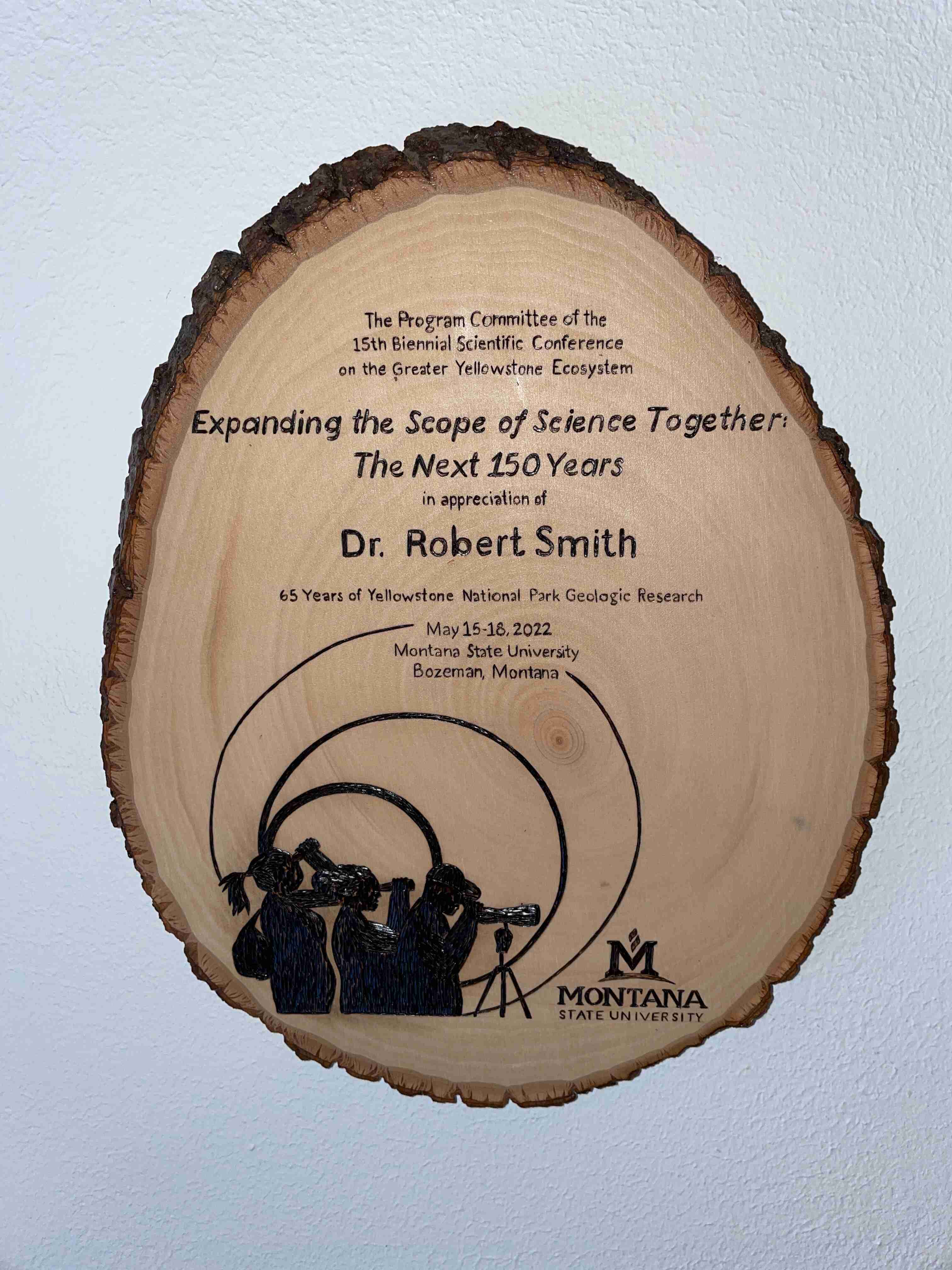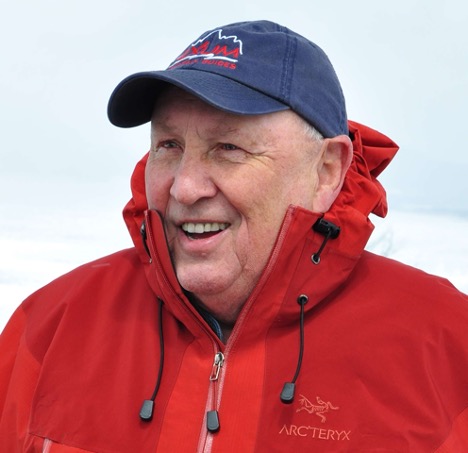Bob Smith Awarded for 65 Years of Work and Research for Yellowstone National Park
 |
Professor emeritus of geology and geophysics Robert “Bob” Smith has been awarded in appreciation for his dedicated geologic work and research on Yellowstone National Park for 65 years. He was awarded on May 15th, 2022 by the Program Committee of the 15th biennial scientific conference on the Greater Yellowstone ecosystem. Smith’s earth science career began in 1956, before college, when he conducted seismic studies of Yellowstone Lake and mapped the geologic setting of all the drainages of the Yellowstone Lake and River and when he was first intrigued about Yellowstone’s geologic origin. This was also when he began traveling Yellowstone’s wilderness following the likes of quintessential Yellowstone rangers, John Lounsbury and Jerry Mernin, on the trails of the pioneering geologists of Yellowstone—Washburn and Hayden of the 19th century and Jagger of the early 20th century. These early and formative experiences led Smith into an academic career with a BS and MS in geology and mathematics at Utah State University. |
|
During Smith’s junior year, the deadly 1959 M7.3 Hebgen Lake MT earthquake occurred; he traveled there and observed the effects of the earthquake with its 6-meter-high fault and 40-kilometer-long scarp, feeling aftershocks every few minutes and hearing astonishing firsthand accounts. This earthquake notably affected the West Yellowstone ranch of Watkins Creek Ranch (now called the Firehole Ranch). This event turned him toward a geophysics career. Smith completed a PhD in geophysics at the University of Utah, 1967, initiating his formal Yellowstone-Teton studies including seismic, GPS, earthquake, tectonic, and volcano studies. Smith has organized and led many national and international meetings on geophysics and related subjects, as well as field trips around a variety of areas, including Basin-Range province, Wasatch Front, Yellowstone, Snake River Plain, Teton Range, Spain, Germany, Switzerland, France, Kenya, Tanzania, Antarctica, Falkland Islands, Palmer Peninsular Deception Island, Hope Bay, Coronation Island, and Fossil Bluffs. Smith served in exploring expeditions of Antarctica as the distinguished U.S. Exchange Scientist to the British Antarctic Survey from 1962 to 1963, following the route of Sir Ernest Shackleton’s expeditions. His 65 years of Yellowstone science have taken him completely throughout Yellowstone and Grand Teton National parks conducting geologic mapping, studying, and monitoring earthquakes and volcanos, studying and monitoring contemporary ground motions with precise GPS measurements. |
|
|
Smith has published of over 200 scientific papers in peer reviewed journals, over 120 alone on Yellowstone-Teton geology and presented thousands of lectures around the world in his academic career. He is also a senior author of “Windows into the Earth: The Geologic Story of Yellowstone and Grand Teton National Parks,” which has sold more than 30,000 copies. Initiated in 1991, the Greater Yellowstone biennial scientific conference series encourages awareness and application of wide-ranging, high-caliber scientific work on the region's natural and cultural resources. With the active involvement of professional societies and other institutions, these conferences provide a much-needed forum for knowledge-sharing among hundreds of researchers, park managers, and the general public. Congratulations to Professor Smith! |
|

